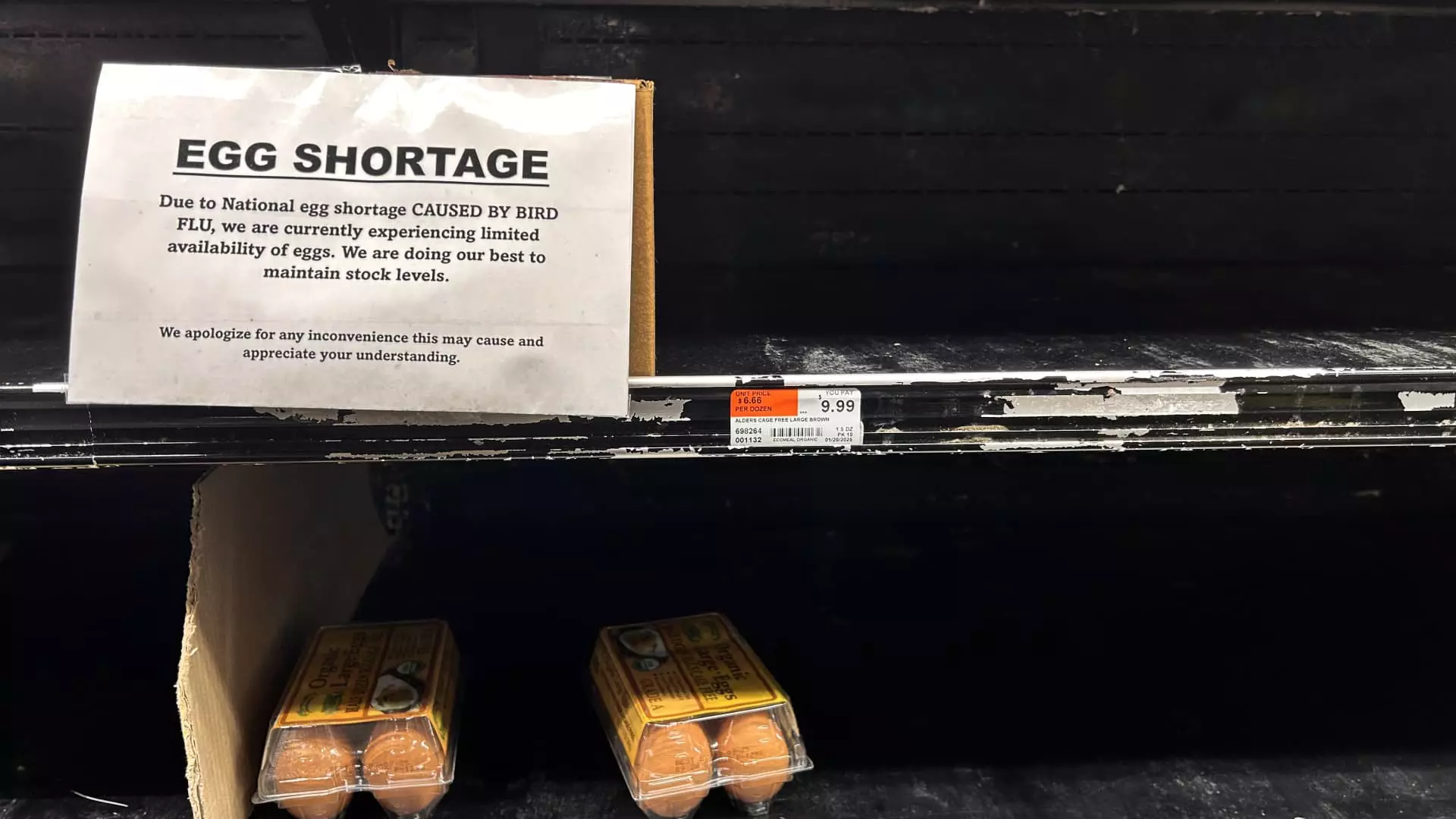The egg market is currently experiencing unprecedented turmoil, with wholesale prices soaring to record highs. This surge can largely be attributed to an escalating avian influenza outbreak, commonly referred to as bird flu, which has dramatically reduced the supply of egg-laying chickens across the United States. As consumers brace for higher prices at grocery stores, it’s essential to dissect the factors driving this crisis and what it means for the average shopper.
Recent statistics indicate that as of last Friday, the average wholesale price for large, white shell eggs reached an astonishing $8 per dozen. This marks a significant leap from the prior record of $5.46 per dozen set in late December 2022. According to market analyst Ryan Hojnowski from Expana, this new benchmark reflects a system under strain, with price adjustments inevitably trickling down to consumers at retail outlets.
It’s crucial to understand that the effect of rising wholesale prices on retail costs isn’t instantaneous. Typically, there’s a delay of a few weeks as grocery stores adjust their prices in response to their supply chain dynamics. This lag could lead to varying pricing strategies among retailers, and when these increases finally reflect on store shelves, consumers might find themselves facing a considerable shock as they scan their carts at checkout.
The Unforeseen Consequences of Bird Flu
Bird flu, a highly contagious and lethal virus affecting avian species, has emerged as the primary culprit behind these soaring egg prices. In an effort to contain the outbreak and prevent further spread, commercial egg producers are mandated to cull entire flocks upon the discovery of a single infected bird. The result has been catastrophic: over 40 million egg-laying hens perished in 2024, representing about 13% of the nation’s total. This drastic reduction has resulted in inventories being approximately 15% to 16% below the five-year average, according to USDA data.
Amy Smith from Advanced Economic Solutions highlighted that around 22 million of these chickens were lost in the fourth quarter of 2024 alone—striking a critical supply shock during the busy holiday season, when consumer demand typically peaks for baking-related purchases.
Consumer sentiment has been impacted significantly by these price changes. Despite an overall easing of inflation in the U.S. economy, egg prices have defied this trend, causing particular anxiety among shoppers. Retail giants such as Trader Joe’s and Costco have had to impose purchase limits to manage dwindling stocks and rising operational costs. Even restaurants are feeling the pinch; chains like Waffle House have instituted surcharges on egg orders, offering a glimpse into the multifaceted effect of price inflation across the food service industry.
The implications for the average consumer are clear: retail prices for eggs still hover at around $4.15 per dozen, a steep 65% increase from pre-price surge levels in late 2021. This rising cost is in stark contrast to the inflation trends seen in other food categories such as chicken, with hen and broiler prices rising much more gradually.
Different retailers are responding to the crisis with varying strategies. Larger chains like Walmart and Aldi are often better positioned; they typically have the flexibility to absorb higher wholesale costs thanks to their robust supply chain management and higher volume purchases. Additionally, many such retailers secure egg supplies through fixed-price contracts, offering them a buffer against immediate price fluctuations.
In contrast, smaller, independent grocery stores may not have the same level of purchasing power or flexibility, leaving them vulnerable to swift price adjustments in response to wholesale changes. As a result, consumers might notice more immediate and steep price increases in these smaller establishments.
With the bird flu crisis showing little sign of abating and potentially impacting egg supplies well into 2025, experts predict continued volatility in the egg market. As the avian influenza outbreaks remain a persistent threat, the mortality rates among egg-laying hens are likely to remain a key driver of price trends. The disparity between egg prices and those of chicken meat underscores the unique challenges faced by different segments of poultry producers.
As we move forward, consumer behavior will play a crucial role in shaping this market. If these price trends continue, shoppers may need to adapt their purchasing habits, explore alternatives, or reconsider their reliance on eggs as a staple food item. Understanding the complexities behind these price shifts may ease some of the sticker shock at the register in the upcoming months.


Leave a Reply